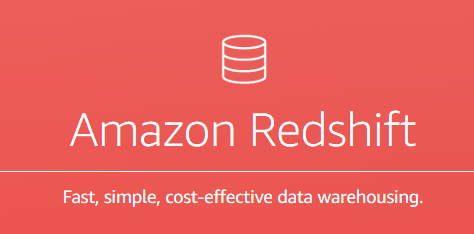AWS Big Data Blog
Category: Amazon Redshift
Building an Event-Based Analytics Pipeline for Amazon Game Studios’ Breakaway
All software developers strive to build products that are functional, robust, and bug-free, but video game developers have an extra challenge: they must also create a product that entertains. When designing a game, developers must consider how the various elements—such as characters, story, environment, and mechanics—will fit together and, more importantly, how players will interact […]
Amazon Redshift Engineering’s Advanced Table Design Playbook: Table Data Durability
Part 1: Preamble, Prerequisites, and Prioritization Part 2: Distribution Styles and Distribution Keys Part 3: Compound and Interleaved Sort Keys Part 4: Compression Encodings Part 5: Table Data Durability (Translated into Japanese) In the fifth and final installment of the Advanced Table Design Playbook, I’ll discuss how to use two simple table durability properties to […]
Amazon Redshift Engineering’s Advanced Table Design Playbook: Compression Encodings
Part 1: Preamble, Prerequisites, and Prioritization Part 2: Distribution Styles and Distribution Keys Part 3: Compound and Interleaved Sort Keys Part 4: Compression Encodings (Translated into Japanese) Part 5: Table Data Durability In part 4 of this blog series, I’ll be discussing when and when not to apply column encoding for compression, methods for determining ideal […]
Amazon Redshift Engineering’s Advanced Table Design Playbook: Compound and Interleaved Sort Keys
Part 1: Preamble, Prerequisites, and Prioritization Part 2: Distribution Styles and Distribution Keys Part 3: Compound and Interleaved Sort Keys (Translated into Japanese) Part 4: Compression Encodings Part 5: Table Data Durability In this installment, I’ll cover different sort key options, when to use sort keys, and how to identify the most optimal sort key […]
Amazon Redshift Engineering’s Advanced Table Design Playbook: Distribution Styles and Distribution Keys
Part 1: Preamble, Prerequisites, and Prioritization Part 2: Distribution Styles and Distribution Keys (Translated into Japanese) Part 3: Compound and Interleaved Sort Keys Part 4: Compression Encodings Part 5: Table Data Durability The first table and column properties we discuss in this blog series are table distribution styles (DISTSTYLE) and distribution keys (DISTKEY). This blog […]
Amazon Redshift Engineering’s Advanced Table Design Playbook: Preamble, Prerequisites, and Prioritization
Part 1: Preamble, Prerequisites, and Prioritization (Translated into Japanese) Part 2: Distribution Styles and Distribution Keys Part 3: Compound and Interleaved Sort Keys Part 4: Compression Encodings Part 5: Table Data Durability Amazon Redshift is a fully managed, petabyte scale, massively parallel data warehouse that offers simple operations and high performance. AWS customers use Amazon […]
Using pgpool and Amazon ElastiCache for Query Caching with Amazon Redshift
In this blog post, we’ll use a real customer scenario to show you how to create a caching layer in front of Amazon Redshift using pgpool and Amazon ElastiCache.
Fact or Fiction: Google BigQuery Outperforms Amazon Redshift as an Enterprise Data Warehouse?
Publishing misleading performance benchmarks is a classic old guard marketing tactic. It’s not surprising to see old guard companies (like Oracle) doing this, but we were kind of surprised to see Google take this approach, too. So, when Google presented their BigQuery vs. Amazon Redshift benchmark results at a private event in San Francisco on September 29, 2016, it piqued our interest and we decided to dig deeper.
Simplify Management of Amazon Redshift Snapshots using AWS Lambda
NOTE: Amazon Redshift now supports creating an automatic snapshot schedule using the snapshot scheduler. For more information, please review this “What’s New” post. ———————————- Ian Meyers is a Solutions Architecture Senior Manager with AWS Amazon Redshift is a fast, fully managed, petabyte-scale data warehouse that makes it simple and cost-effective to analyze all your data […]
JOIN Amazon Redshift AND Amazon RDS PostgreSQL WITH dblink
Tony Gibbs is a Solutions Architect with AWS (Update: This blog post has been translated into Japanese) When it comes to choosing a SQL-based database in AWS, there are many options. Sometimes it can be difficult to know which one to choose. For example, when would you use Amazon Aurora instead of Amazon RDS PostgreSQL […]









